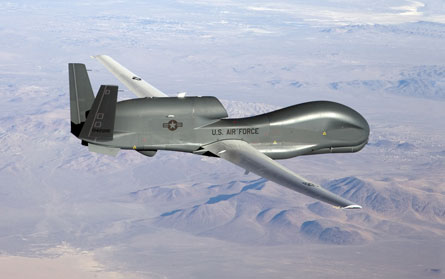NATO is "shooting for" a 2012 entry-into-service date for its long-awaited airborne alliance ground surveillance (AGS) fleet, although the contract remains unsigned and the most likely contractor acknowledges facing development issues.
Richard Froh, NATO's deputy secretary general for armaments, says the 2012 date remains viable, even after the alliance transformed the AGS programme last year from a mix of manned aircraft and unmanned air vehicles to an all-unmanned fleet. The new version of AGS would include eight Northrop Grumman RQ-4B Global Hawks equipped with the multi-platform radar technology insertion programme (MP-RTIP) sensor.
NATO has sought an AGS capability similar to the US Air Force's Northrop E-8C JSTARS airborne ground surveillance system since the early 1990s. It originally planned to buy a mix of modified Airbus A321s and Global Hawks, but discarded that concept last year "largely for affordability reasons", Froh says.
 |
|---|
© USAF |
The AGS programme is on hold until its partners sign a memorandum of understanding, which would include capability requirements and a workshare agreement. NATO has budgeted more than €1 billion ($1.31 billion) to complete the deal.
Northrop believes the RQ-4B can meet NATO's delivery schedule, but the development programme for the MP-RTIP radar has fallen behind. Northrop has stopped work on two of the four MP-RTIP modes - a concurrent synthetic aperture radar (SAR) and ground moving target indicator (GMTI) and a ground high-resolution mode. Instead, it is moving forward on finalising MP-RTIP's two standard modes, which will provide non-concurrent SAR maps and GMTI imagery.
Northrop believes the problems with the two advanced modes could be resolved by the time the first RQ-4Bs enter service for NATO in 2012.
Source: Flight International























